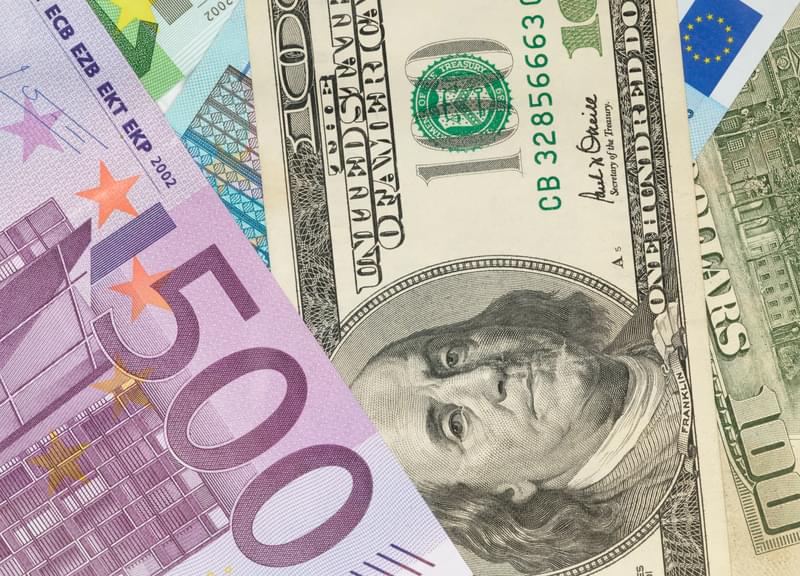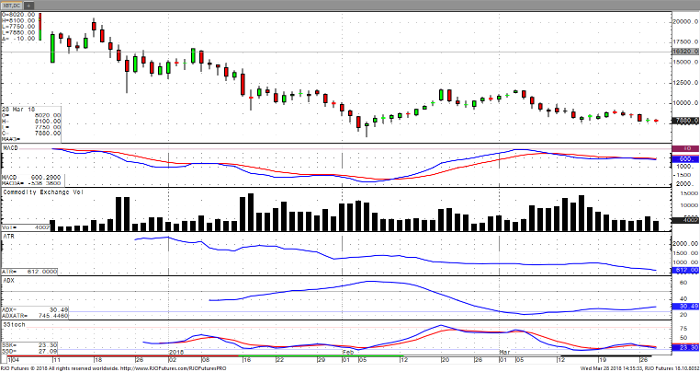
A contango market essentially means that the futures contracts are trading at a premium to the spot price. The best way to view if a market is in a contango is to look at the daily settlement price data of the underlying futures contract from the exchange and look at the series of months going farther out over time. If prices are more expensive this is a contango, if prices get cheaper this is called backwardation.
Often times we see contango markets in other commodities such as grains, metals and energies and work to the benefit of the hedger who is trying to lock in prices for forward production. In this case it would be the bitcoin miner who would benefit.
This comes as bitcoin itself has dropped significantly, continuing to decline from the March highs of $11,700 and most recently testing support at $7,700. The most recent blow to prices came from an announcement that Twitter would ban cryptocurrency ads. We have seen similar bans by Google and Facebook while as regulatory news has also been another negative driver of prices over the past months.
What this means for prices going forward is we should continue to see the larger bitcoin miners try and take advantage of this contango opportunity while the shorter term speculators could see a break below $7,700 and a retest of the all time futures contract low of $5,970. So I would be cautious until we can see some signs of strength come back into the market.
Bitcoin Daily Chart



